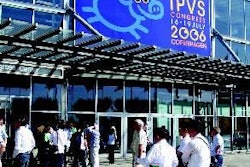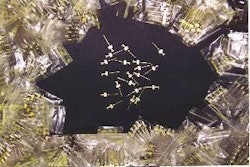
This year has brought the first big landmark for a project in Ukraine that has set itself the target of making a journey of 8 steps. Step 1 has been completed in 2006, meaning the start and operation of a herd of 650 sows and the initial deliveries of pork to supermarket chains in and around Kiev.
The journey in fact started in 1998 when Mr Oleksandr Olekseevich Mostipan, whose previous business had imported Belgian ice-cream to Russia, decided to move to Kiev from the Russian city of Kazan because he saw big possibilities in the reconstruction and development of the Ukrainian agricultural sector. At Pereyaslav-Khmelnicsky, approximately 100 kilometres from Ukraine's capital, he bought a grain storage elevator and feedmill while also renting 2000 hectares of land for the production of maize. From this is established a company called Niva Pereyaslavshchiny which is conceived originally to market quality maize and feed products.
Agricultural skills were needed, of course, so Mr Mostipan hired local specialists in maize and feed production and sent them to study in France. As the grain business developed over the next 6 years he invested in more land and new production facilities. The transfer of French techniques showed good results. By 2004 Niva Pereyaslavshchiny was cultivating more than 10 000ha of maize and 2000ha of wheat. It had built up export sales to Russia for about 75% of its grain output.
Although the other corn is used by the company in manufacturing feed, however, its feedmill was working only to about one-eighth of its maximum capacity. Mr Mostipan looked around for other opportunities requiring feeds and became aware of high prices applying locally at that time to pigmeat and pork products. After making several reconnaisance trips to different countries of western Europe he became determined to invest in modern, western-style pig production.
By the start of 2005 this was evolving into a focus on the pork sector in Denmark. In May of that year, Mr Mostipan signed a contract with Danish equipment company Aco Funki and construction began in June on what would become the basis for his new 650-sow herd.
Jens Jungersen Thomsen, commercial attaché at the Trade Council of Denmark in Kiev, recalls the decision to have new buildings instead of reconstructing old ones and to follow Danish design standards, including the concrete elements and slats even though these were being made locally. The central idea, he comments, was to have state-of-the-art Danish solutions adapted to Ukrainian conditions by concentrating on equipment for ease of operation, durability and economic impact on the production process.
"The first piglets, also from Denmark, arrived in Pereyaslav-Khmelnicsky in November 2005 to begin the production cycle," he reports. "By October 2006 fresh pork from Step 1 of the project had started to appear on the shelves of Billa, Metro and other supermarkets in Kiev. As with maize production, Mr Mostipan has hired experts in producing pigs to manage the programme. Part of the contract with Aco Funki has been that it supplies optimised recipes for the feed based on his maize."
Now that Step 1 is up-and-running, a new contract to deliver the equipment for Step 2 has been signed with the same supplier and construction is in progress. Steps 3 and 4 are going to be constructed in 2007, again using the principles of Steps 1 and 2.
"Niva Pereyaslavshchiny should be able to deliver around 75 000 slaughter pigs per year by the beginning of 2008," Mr Jungersen Thomsen reports. "These will be marketed at 110kg. At a current price of 12 Hryvnia (UAH) per kilo, that represents an annual turnover of UAH99 million, approximately equal to US$19.6 million. Even then, Mr Mostipan calculates that the capacity of the feedmill allows Niva Pereyaslavshchiny to keep building up to Step 8, which would produce about 140 000 slaughter pigs per year."

















